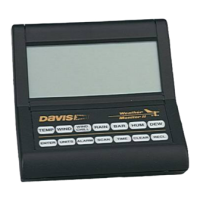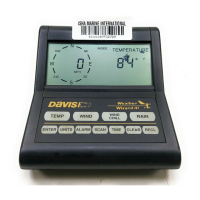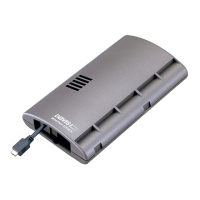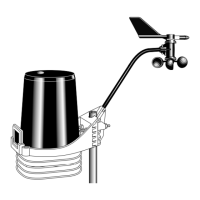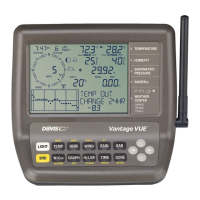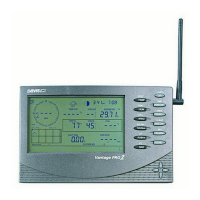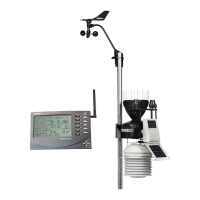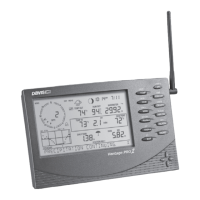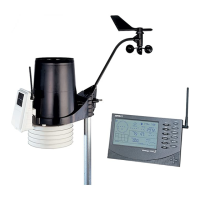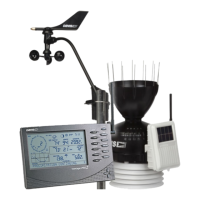page – 19
DAVIS | WeatherLink Console User Guide
davisinstruments.com
Note: Your station’s UV readings do not take into
account UV reected off snow, sand, or water, which
can signicantly increase your exposure. Nor do your UV
readings take into account the dangers of prolonged UV
exposure. The readings do not suggest that any amount
of exposure is safe or healthful. Do not use your Console
to determine the amount of UV radiation to which you
expose yourself. Scientic evidence suggests that UV
exposure should be avoided and that even low UV doses
can be harmful.
UV MEDs
MED (Minimum Erythemal Dose) is dened as the amount of
sunlight exposure necessary to induce a barely perceptible
redness of the skin within 24 hours after sun exposure. In
other words, exposure to 1 MED will result in a reddening of
the skin. Because different skin types burn at different rates,
1 MED for persons with very dark skin is different from 1 MED
for persons with very light skin.
Both the U.S. Environmental Protection Agency (EPA) and
Environment Canada have developed skin type categories
correlating characteristics of skin with rates of sunburn.
UV Index
The Console can also display UV Index, an intensity
measurement rst dened by Environment Canada and since
been adopted by the World Meteorological Organization. UV
Index assigns a number between 0 and 16 to the current UV
intensity. The US EPA categorizes the Index values as shown
in table A-3. The lower the number, the lower the danger
of sunburn. The Index value published by the U.S. National
Weather Service is a forecast of the next day’s noontime
UV intensity. The index values displayed are real-time
measurements.
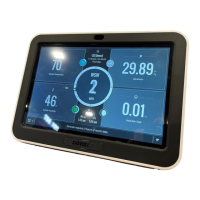
